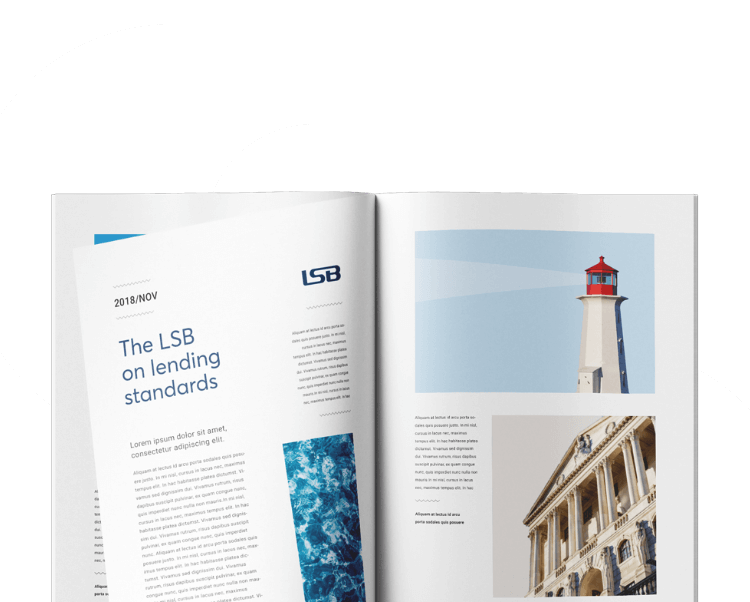The pandemic has cemented a mass transition from traditional to alternative finance among UK consumers and SMEs. A perfect storm of circumstances including a pandemic-driven cash flow crisis among businesses, and the rise of fintech and challenger banks, is spurring the rise of alternative lending models. A burgeoning £6.26 billion market in alternative lending now represents a major opportunity for these lenders to meet the evolving needs of their customer base.
Alternative lending, a form of financing that provides funds to businesses and individuals without having to go to a ‘traditional’ bank, creates opportunities, but with that, new risks. It has the potential to diversify finance, widen economic inclusion, and increase choice and competition to drive greater innovation across all financial products and services. Yet the current lack of regulation and universal standards around the alternative lending market creates potential risks when it comes to ensuring good customer outcomes are achieved.
Voluntary best practice standards provide the framework for alternative lenders to utilise these new opportunities, whilst keeping risks not captured by legislation to a minimum and ensuring good customer outcomes can be achieved. Here are three alternative lending trends gaining momentum along with considerations for how firms can overcome the associated risks to their personal and business customers.
Are non-bank lenders up to the SME challenge?
The digitalisation and democratisation of finance has accelerated with digital-native alternative lenders increasingly tailoring their consumer products to SME needs. This comes at a time when a quarter of UK SMEs are suffering a cash flow crisis, three quarters are unable to access traditional finance, and 50,000 businesses are going insolvent annually due to cash flow problems. Onboarding business customers in difficult circumstances requires alternative lenders to have the appropriate governance structures and processes in place to support turnaround opportunities where required.
Successfully resuscitating businesses and reducing default risks partly hinges on lenders being able to pre-emptively signpost struggling SMEs to turnaround professionals before it is too late. Without proper governance, oversight and training, at-risk customers could slip under the radar or be inadequately signposted in a way that increases the risk to lender and business customers alike. Alternative lenders should have an overarching assurance and oversight framework embedding a set of processes based on professional turnaround expertise to drive consistent best-practice in rescuing struggling firms.
Buy Now, Pay Later and the issue of vulnerable customers
Buy Now Pay Later (BNPL) is another alternative lending model experiencing a surge in popularity due to the pandemic and the associated E-commerce boom. This creates opportunities for both consumers and lenders: the seller gets instant payment, increased cart value, higher conversion rates and more footfall; the consumer gets more affordable solutions that increase their purchasing power.
However, without any way of knowing the level of borrowing under this product type or affordability assessments, BNPL also presents the risk that vulnerable customers will be overlooked, over commit themselves, fall into financial difficulty or that it will compound an existing issue. Part of the problem is that warning signs of financial difficulty among vulnerable customers can be hidden in seemingly innocuous consumer behaviour, such as use of BNPL for essential spending in supermarkets.
In the absence of regulation in this space, firms should consider working towards best practice standards which can be implemented to help identify red flags in customer data and appropriate customer communication. This could inform a smart, data-driven customer service that anticipates, identifies, and responds to financial difficulties through pre-emptive measures, such as financial education, and reactive measures, such as payment plans, or signposting to third-parties for specialist assistance.
Embedded finance and the customer journey
The concept of embedded finance is also transforming the UK’s lending landscape. This model gives firms the opportunity to offer customers a one-stop-shop suite of financial products and services without the need for a banking licence. Against a backdrop of increasing consumer appetite for instant, embedded finance, firms will have to work to similar timetables with their products. This is where tracking the digital customer journey to ensure good outcomes don’t waver will be key.
Without having methods in place to track the whole customer journey, such as customer journey reviews, how will these firms know how their customers are being treated, and how will they identify what steps need to be taken to mitigate any risks? By identifying areas where the policy, process, design, or delivery of the journey are not adequate, firms can gain a better understanding of areas for improvement across a variety of channels – and achieve good customer outcomes as a result.
Recent research reveals that 45% of SMEs with plans to grow in the next 12 months are concerned about using alternative finance providers, partly due to fears over a lack of regulation. There are growing calls for FCA regulation to encompass the alternative lending market to increase protection for customers and businesses.
All lenders should consider working towards best practice frameworks to keep pace with the latest trends and ensure the best outcome for their customers. Voluntary industry standards, such as the Standards of Lending Practice for personal and business customers, provide these frameworks and set the benchmark for good lending practice in the UK. They should continue to be adopted alongside statutory regulation, to raise the bar on base line standards.
Working towards standards in this space would also incentivise and inform collaboration via the sharing of knowledge, expertise, and insights between regulators, traditional and challenger banks, and alternative lenders. This would ensure individual advances and learnings drive sector-wide progress whilst supporting better customer outcomes and building confidence and trust between customers and firms, ensuring alternative finance delivers on its promise of democratising finance for all.






